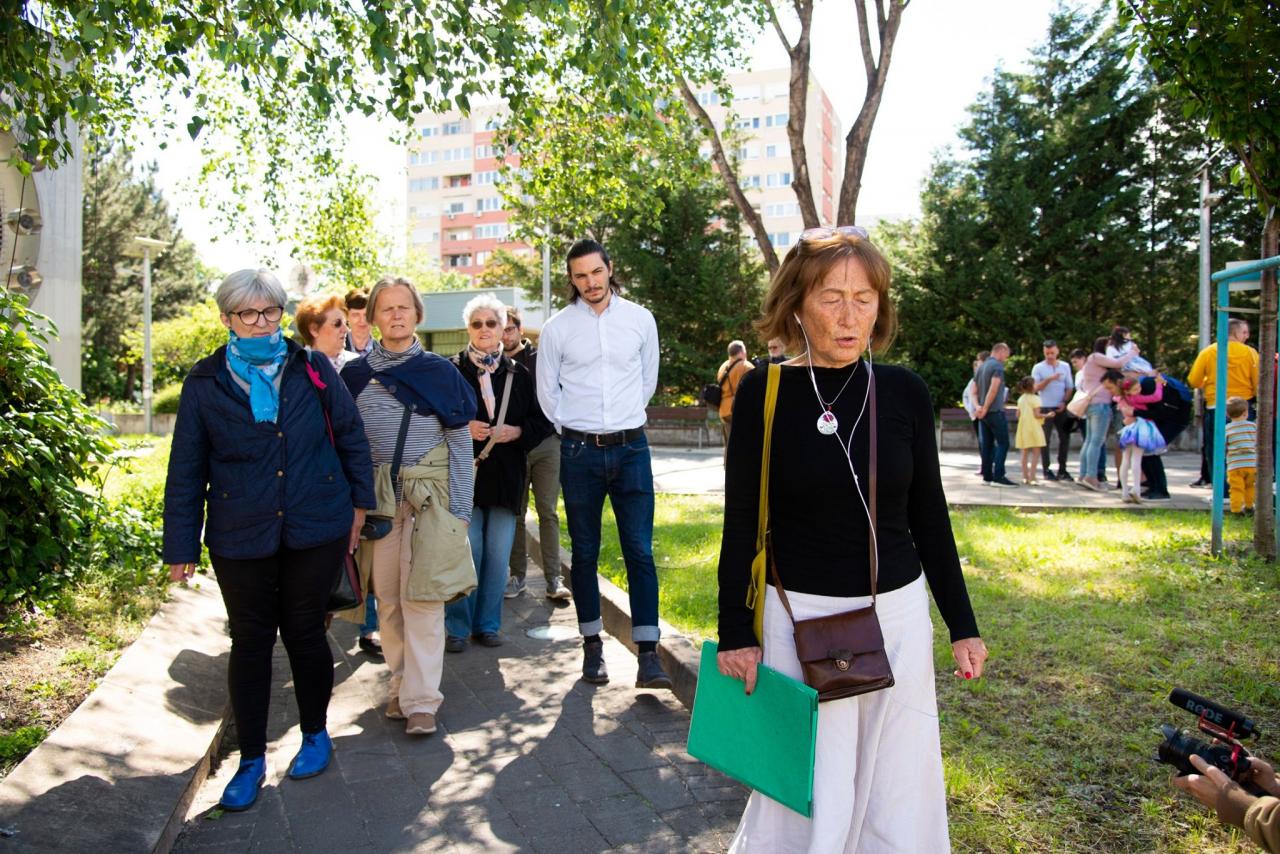
How can one capture the change reached or created thanks to a transfer process. Who is the most affected by these changes? How is it possible to detect outcomes and societal impact linked to a community-based and community-targeted intervention? Actually what is considered an impact at all and how to assess it?
These are the questions - no doubt - every transfer network might have struggled with. Come in! Transfer Network is no exception.
Throughout the more than two years long joint journey various methods and techniques were implemented in Come in! in order to help project partners through this interesting path of realizing and recognising impact. Let’s learn about the shifts and focuses of the Come in! Transfer network in chronological order through the lenses of envisioned and realized impact.
One might say impact assessment starts with a carefully mapped and detailed project planning. A solid framework and a well-defined indicator system are essential to set a realistic goal and achievable perspectives to a project. Identifying the challenges, clarifying priorities by defining the target groups and listing the expectations in regard to mindset, policy, behavioural changes are the baseline of each and every project design.
Therefore we applied a self-developed learning matrix template with guiding questions to help the project partners identify their key expectation, learning goals and envisioned changes on different levels. The first entry of this learning matrix was conducted at the beginning of the project during the network’s kick-off meeting. The representatives and ULG coordinators of the partners (perceived as project team) filled out this detailed matrix answering questions like:
- What do you expect to achieve in changing the municipalities’ mindset due to the integrated urban development networks?
- What do you expect to gain out of this network on institutional, personal and local level?
- What do you expect your ULG will learn out of the transfer process?
- What do you expect to achieve in changing the local mindset regarding the topic you address?
The recurring answer to the changes in municipalities’ mindset was to make decision-makers appreciate the grassroots initiatives and to highlight the importance of communication with citizens and their involvement in public-related decision making. Generally speaking, the common aim was to open up the public administration towards its citizens. Respondents jointly underlined the international and intercultural knowledge sharing (methods, techniques, attitudes), just like international visibility as key expectations in regard to their personal and even institutional and local learning gains. Contemporary and participatory approaches in addressing problems, developed cooperation skills, and utilized tools which can be applied in other projects were also strongly mentioned by the project teams. Interesting visions appeared in order to the key assumptions linked to the ULG members like the gained ability to deal with social problems, established and sustainable network of local stakeholders, more self-reflective, prouder citizens as part of the local communities, which might result in public innovation, non-centralized initiative, active public spaces, decreasing isolation, plus viable ideas and developed working culture. All in all, there was a strong need in the project partners to adapt tools that assist them to reactivate locals, build relationships with the citizens, facilitate cross-age co-operations and find change engines who might be encouraged enough to carry on similar projects.
Partners started the transfer process having the key objectives and wishes set and after almost a year, but right before the lockdown, they had the chance to reevaluate their concept of change by filling out the second entry linked to the midterm evaluation. Just ending 2019 three pilot festival (transfer demos) took places in Plasencia, Gheorgheni and Őrmező (Budapest), others were actively planning their pilot activities for the first half of 2020, which plan was highly rewritten by the global pandemic citation. Based on this, some reflections in the learning matrix were informed by field experiences, some were rooted in the preliminary preparation. Nonetheless, detectable changes have started happening in each case. The most significant insight was how the partnering municipalities become aware that organisations, NGO-s are able to realize ambitious activities without the public administration leaning in too much if they share goals despite their different profile. Building, giving and recognising trust appeared recurrently in each reflection. Experiencing that citizens are able to make decisions (and they are allowed to) if so-called decision-makers are supporting but not affecting them might be a revelative notion. Citizens and residents started to feel that their voice matters and it is not so difficult to provide dialogue and cooperate with officers because ideally, the common aim is to solve problems with joint forces. All in all the strengthened trust is tangible in several cases, the sense of belonging started to get reinforced and the re-unions of neighbours is possible, besides it is an important conclusion that cross-institutional practices are inevitable to achieve success.
Impact can be generated and catalyzed on various levels. Project partners as interventionists had a chance to be self-reflective and to cognitively analyse and observe the process they have been involved in by using the learning matrix template. As a closing act - the final entry - we used the Theory of Change (TOC - Nesta 2011) template which is a “practical tool to trigger and support social innovation” to detect changes on perceptual and theoretical levels retrospectively.
Gheorgheni stated in its TOC analyses that the transfer process had a mild success since the initiative flow was interrupted by a political change causing instability and uncertainty. To reach and maintain mindset change (societal impact) a critical mass is required, but with meaningful tasks and goals it is achievable to create proactive independent communities. In the case of Pori, the TOC analyses highlighted a paradigm shift in the city council towards urban planning. This effect might be not exclusively caused by the Come in! Transfer process, but this community-based approach had a role in it. Pori expressed that thanks to the transfer process they welcomed an increased number of visitors (on the developed database website and offline as well) and they learned that explaining is not enough, one needs to demonstrate an action to lift up the community spirit and to reach wider awareness towards the cultural heritage.
According to Targówek, the most important step was to achieve success by carefully identifying stakeholders and to encourage NGO’s to take action in cooperation with the municipality. As a measurable effect, they worked with more than 36 people, realized 2 district-wide activities and they felt they were able to paint this peripheral district attractive through the storytelling activities. Although the perceptual shift is still in progress.
Varaždin realized to step out of the city centre and organise a festival with more than 1200 people being interested. Residents gained knowledge about their own neighbourhood and the film about the Đurek district was broadcasted in the national media. They want to keep up the good work and expand the festival format to other parts of the city as well.
Forlí managed to activate more than 80 people as ULG members and engage 30 people for the long run by co-design methods. They created a user-friendly online database merging architectural facts with storytelling features. They aim to maintain this local network and involve them in other projects.
Plasencia reached approximately 10.000 people by the pilot edition of the festival adaptation and their alternative output the crowd-sourced video contest. The videos are telling stories with a slightly artistic touch and created by locals. This was a successful format to keep up the spirit despite the pandemic.
In the case of Őrmező, the municipality got more open towards the bottom-up initiatives since they organised two pilot festival with the intensive involvement of the local stakeholders. The aim to change the perception of the urban landscape inherited by the socialist era is still in progress, but the first steps were definitely made so the seeds of new approaches became recognizable.
The Theory of Change tool was a fortunate choice to collect soft and hardcore data, measurable and semi-tangible impacts as well on the partner level. The project teams intuitively collected evidence based on interpretation. Some quantifiable data underlines their achievements (communicational indicators, events, outputs) but the long-term envisioned changes are more rooted in self-declarations linked to project frameworks and systemic analyses.
However impact and change can be detected among the members of the target group, more precisely among the ULG members. They have been a crucial part of the process (and somehow the target group of the transfer as well). Based on this double quality it is adequate to assess the change they have experienced as an influencer of the process and as the target group of the process. To gain their interpretation we introduced a narrative tool so-called The Most Significant Change (Rick Davis and Jess Dart, 2005) combined with a visual tool the Photovoice technique (Caroline Wang and Mary Burris, 1997). Since the good practice’s key ingredient is storytelling and participation a suitable choice was to choose a format for assessment that serves this purpose and operated with stories and images to capture the change. These are interpretative qualitative techniques to assess soft outcomes and impact and represents the following notion: “change and impact start with its recognition and self-reflection is essential". Using these participatory action research methods participants maintain control over the data collection and they receive the chance to express their own interpretations. Each partner asked their ULG to share a story which represents the most significant change they individually experienced, linked the project and illustrate it with a photo/image capturing the change they are referring to.
Let's see the stories of the ULG members:

Listening and sharing points of view with different people, mixed dialogue, condensed yet casual setting, caffe. I ask him to sit down, in Finnish, and then he show me that he was a pilot and ...
- Julia Kovacs Haavisto (Pori - Finland)
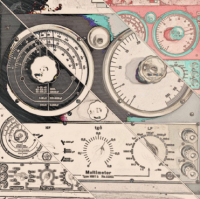
During the Story Café I was able to get to know better people I already knew and I also got a lot of new friends. It would be great to do more interesting stuff with this team!
The photo is created out of a photo taken from a radio apparatus that was on display in the Story Café.
- Petri Haavisto (Pori - Finland)

Ok, there is a door which is one of the doors of “Come In” buildings. The change is behind this photo, in the names that populate the back of the door. The door is a threshold but also an opportunity to meet. It is a multi-dimensional meeting that opens itself on the past and on the future, on little and compelling stories. Once the door is closed, the change has already happened.
- Alessandro Fabbri, anthropologist and creative, Ulg member (Forlí- Italy)
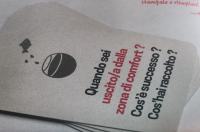
June 2019. Serena and Francesco come into my office to propose something not very clear but fascinating, for which you have to do a lot of work and there is little money. Just the kind of job I'm trying to get out of. The greatest learning has been the challenges:
- The fatigue of working in another language, in a completely new setting (treasure boxes, photo safari, learning log, ULG), the teamwork that sometimes doesn't work well, the bureaucracy.
But in the end, we always succeeded, together! And now I feel safer and more competent, more European, I know my city better and I know how to network better. I jumped out of the aquarium, I didn't die, I slowly became an amphibian.
- Elena Salvucci, Casa del Cuculo ULG coordinator ( Forlí - Italy)
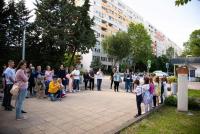
As the coordinator of the project, and as a relatively recent public figure in Őrmező, I had great success with involving civic actors of the local community and establishing open and cooperative partnerships over the past year which will be beneficial for further activities of the community house.
More than 50 people participated in the festival as volunteers in the form of volunteers, co-organizers, creators of performers. I would like to highlight the literary walk and the Korzó Zöld Pont program element in terms of the Good Practice, which best justify the sample of Budapest100 in the housing estate environment and which mostly served to present local values to local actors.
- Zsuzsa Szegedi (Őrmező - Hungary)
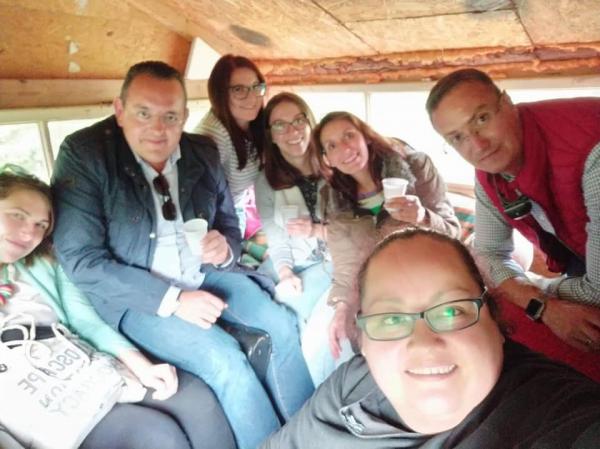
A great work team, that have had the opportunity to exchange ideas for the URBACT project.
I got a new vision. Participating in the adaptation of Budapest 100 in Plasencia, I had the opportunity to inform about the stories behind some buildings, stories that the passage of time made go unnoticed. Urbact has given me the opportunity to learn more and to appreciate the value of our city, with its houses and buildings.In a very positive way, with an enrichment that will remain in our lives. We’ve been able to learn about different life stories, those behind each building, each country.
- Wendoline García Ponce ( Plasencia - Spain)

It is the image of an activity in Budapest where we begin to exchange ideas and tell stories to prepare for the Plasencia festival. It happened when we understood the objective of this project, which is not a conventional festival but a meeting, a possibility to learn stories from close quarters, told by neighbors. All experiences leave their mark on our reality. Meeting the other participants and their projects has enriched my life, as well as everything I have learned about my city.
- Marian Castillo ( Plasencia - Spain)
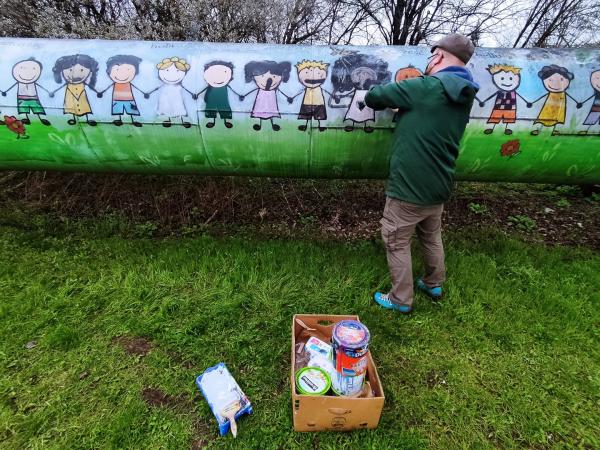
This photo shows people with whom I got involved in the renovation of a mural. The mural was created a few years ago by children from a nearby primary school. Most of them lived in a refugee shelter and had various traumas behind them. Photo represents everything cool about this project for me:
- my daughter who symbolizes the young generation and who goes to school with these children
- a joint effort of the local community that makes the world around us a better place
- an artistic creation that sends the good message
This is the best sense of such activities as this festival was.
- Rafał Suchocki – ULG member (Targówek - Poland)

do not be afraid to be the spark that will ignite the flame
In preparation for the festival there were many times when a small idea presented during ULG meetings turns into a real action which later leads to the achievement of great goals.
- Bartosz Romaniuk – ULG member ( Targówek - Poland)
As this instant teaser of the photo voices and stories suggests, interpersonal connections and the human aspect is the most powerful catalyst of change. Unfolding knowledge, listening to people sharing their stories, stepping out of comfort zones, taking actions and being a part of the wider European community are the key drivers of change on a personal level.
In two cases (Varaždin and Gheorgheni) the collection of photo voices was not possible, so a blended solution was applicable. Interviews were conducted with the ULG coordinators reflecting on the most significant change they faced personally and among their ULG members.
Maja Kireta ULG coordinator and Goranka Grgić from Varazdin (Croatia) shared stories about their ULG and how crucial it was to apply workshop formats for involvement and engagements of citizens and to set a doable, achievable expectation limit where the members could feel competent and could develop self-confidence and pride. This personal growth aspect was not expected nor intended but it happened due to the bottom-up approach and the feasible scale of the transfer assignments.
István Elekes ULG coordinator from Gheorgheni (Romania) remembered as a most significant moment an informal dialogue happened after the pilot festival when a locally respected architect expressed his admiration and assured the ULG members that they had started something important in the town. Although not all of the expectations came true, acupuncture-like impacts have been detected on town-level, which might have lasted longer if it were not for the pandemic.
Change has happened, memories were created, discourse has been started, interpersonal connection got nurtured, knowledge was shared and the Come in! transfer process happened. The work has been started but the job is not done yet. Midterm mainly soft outcomes were detected by the methodologies used in the network, but reaching long-term societal impact is a matter of time and the frequency and exploitation of the adaptation. As the ULG coordinator from Őrmező expressed “seeds planted” but the journey has just begun.
Rita Szerencsés, Ferenc Albert Szigeti
